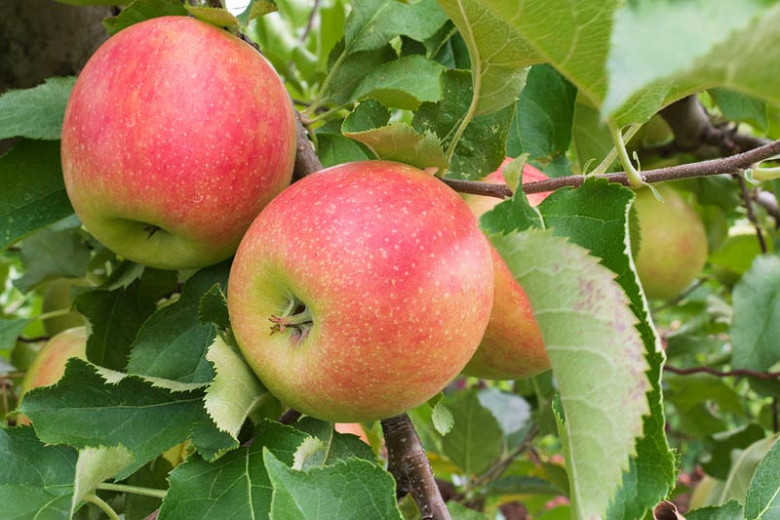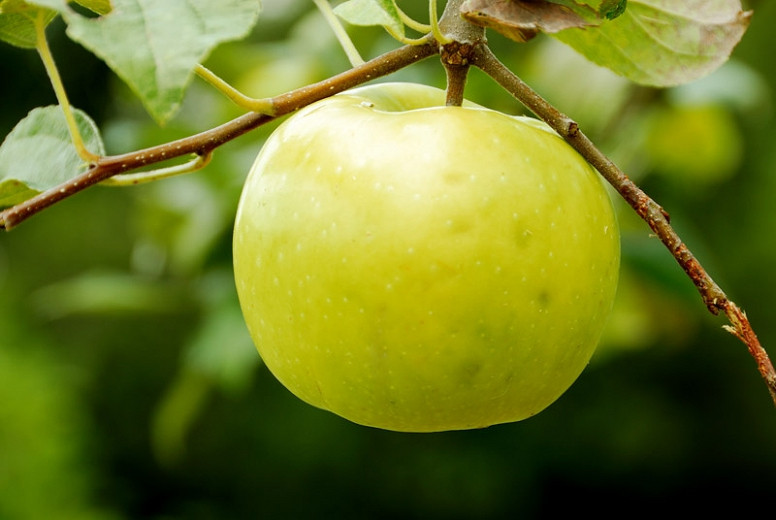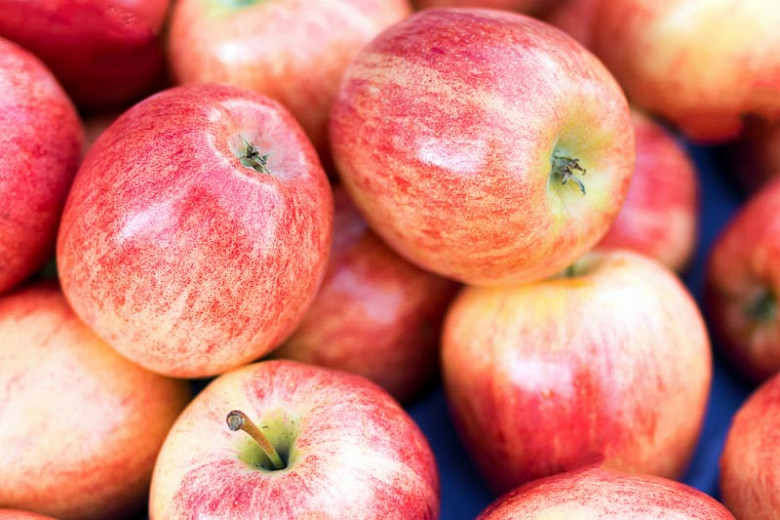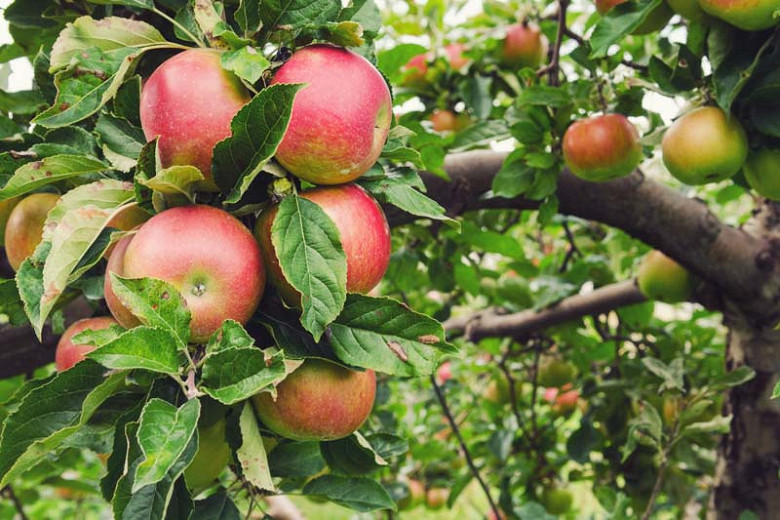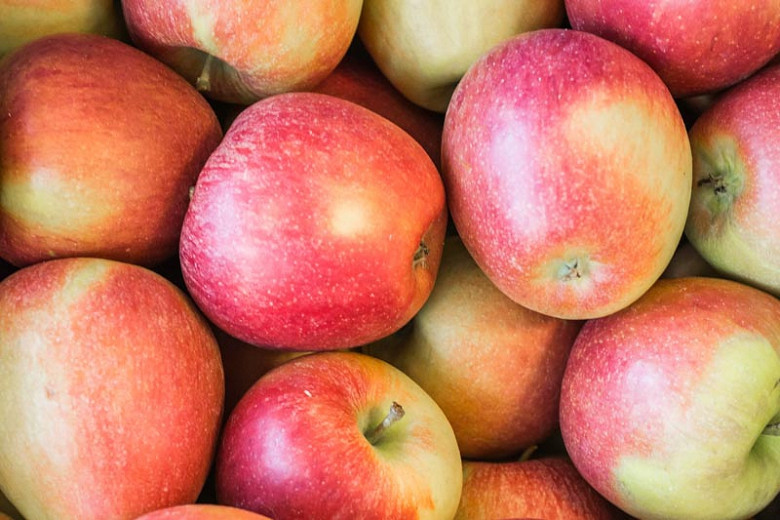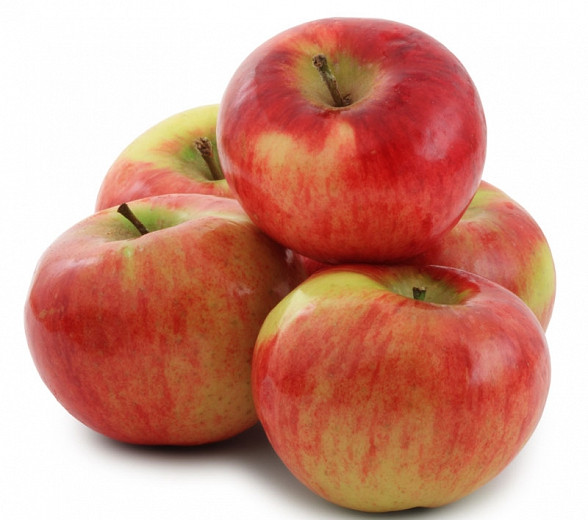Malus domestica Jonagold (Semi-Dwarf Apple)
Widely grown in the USA and Europe, Malus domestica 'Jonagold' is a culinary or dessert cultivar with a profusion of fragrant, white flowers in early mid-season (mid-spring). Draped in clusters along the branches, they are truly a sight to behold. The flowers attract bees, butterflies, and hummingbirds. They are followed in the fall by a heavy crop of large, greenish-yellow apples adorned with a red-orange blush. The fruits have a unique honey-tart flavor and crispy, juicy, nearly yellow flesh. They are perfect for eating fresh and for cooking. Jonagold is not self-fertile and requires pollination by a tree of another variety with the same bloom period such as Gala, Golden Delicious, or Red Delicious. Developed by the famous Geneva research station in New York State in 1943, Jonagold is a cross between two classic apple varieties, the aromatic Golden Delicious and the sprightly Jonathan. Beautiful in bloom, heavy with luscious apples, and picturesque when old, apple trees are very rewarding additions to the landscape.
- Recipient of the prestigious Award of Garden Merit of the Royal Horticultural Society.
- Grows up to 12-15 ft. tall and wide (3-5 m).
- A full sun lover, this tree is easily grown in deep, loamy, moderately fertile, medium moisture, well-drained soils. Prefers a sheltered, frost-free position.
- Since edible apple cultivars do not grow well on their own roots, most varieties have been grafted onto rootstocks and are classified as dwarf (8-10 ft, 2-3 m), semi-dwarf (12-15 ft, 3-5 m) and standard (18-25 ft, 5-8 m). The fruit itself is full-size and not dwarfed. Dwarf or semi-dwarf apple trees offer some benefits: they produce fruit at an earlier age and are easier to manage (spray, prune and harvest).
- Apples should be pruned every year to get the best crop. They also need to be thinned to about 8 in. apart (20 cm) if you want to reap the best-quality fruit.
- This deciduous apple tree adds a charming presence, tucked into a shrub border or planted as a specimen.
- Keep an eye out for aphids, woolly aphid, rosy apple aphid, fruit tree red spider mite, mussel scale, codling moth, caterpillars, Apple scab, apple canker, powdery mildews, blossom wilt, and honey fungus.
- Propagate by chip budding or grafting onto a clonal rootstock for fruit.
Requirements
| Hardiness | 5 – 8 |
|---|---|
| Climate Zones | 2, 2A, 2B, 3, 3A, 3B, 4, 5, 6, 7, 8, 9, 14, 15, 16, 17 |
| Plant Type | Fruit, Trees |
| Plant Family | Malus – Apples |
| Exposure | Full Sun |
| Season of Interest | Spring (Mid,Late)Summer (Early,Mid,Late)Fall |
| Height | 12' – 15' (3.6m – 4.5m) |
| Spread | 12' – 15' (3.6m – 4.5m) |
| Water Needs | Average |
| Maintenance | High |
| Soil Type | Clay, Loam, Sand |
| Soil pH | Neutral |
| Soil Drainage | Moist but Well-Drained, Well-Drained |
| Characteristics | Fragrant, Plant of Merit, Showy, Fruit & Berries |
| Attracts | Bees, Birds, Butterflies, Hummingbirds |
| Garden Styles | Informal and Cottage |
